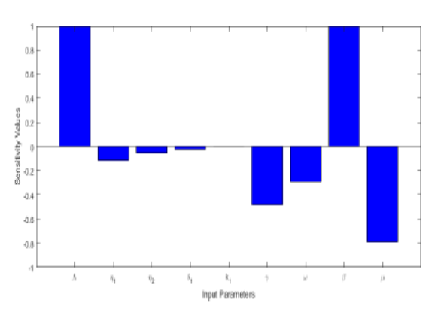


Indian Journal of Science and Technology
Year: 2024, Volume: 17, Issue: 17, Pages: 1800-1812
Original Article
A Joshua Cyril Yagan1*, D Jasmine1
1Department of Mathematics, Bishop Heber College (Autonomous), Affiliated to Bharathidasan University, Tiruchirappalli, 620 017, Tamil Nadu, India
*Corresponding Author
Email: [email protected]
Received Date:30 January 2024, Accepted Date:10 April 2024, Published Date:24 April 2024
Objectives: Many research deals study on modeling the spread of dengue virus disease. The study dealing mathematical model to influence the concept of segregating infective is very important as it makes an organised practice of treatment which enlightens civilization. This article focuses on the same and frames a model with a proper analysis. Methods: BhirkoffRhota theorem helps in proving the boundedness of the model. By using the Next-Generation matrix the expression for Reproduction number is determined. The Routh-Hurwitz stability criterion is used to reveal the Local Stability of the proposed model. The aid of Lyapunov-LaSalle's principle proves the Global Stability. Findings: The proposed model is found to be positive and also bounded. Moreover, the equilibrium points exists and stable locally and globally. The numerical simulation shows that at the disease-free equilibrium and at the endemic equilibrium proving the stability of the model numerically. The comparative analysis of the model results in revealing the fact that the proposed model controls the infective better than the usual model. Novelty: The article differs from the usual model by incorporating the idea of categorizing the infected population into 3 phase namely febrile, critical and convalescent concluding that the use of proposed model helps in effective treatment and in efficient management of hospital resources in a systematic way.
Keywords: Epidemic, Treatment Class, SEIR model, Jacobian matrix, Sensitivity index
© 2024 Yagan & Jasmine. This is an open-access article distributed under the terms of the Creative Commons Attribution License, which permits unrestricted use, distribution, and reproduction in any medium, provided the original author and source are credited. Published By Indian Society for Education and Environment (iSee)
Subscribe now for latest articles and news.